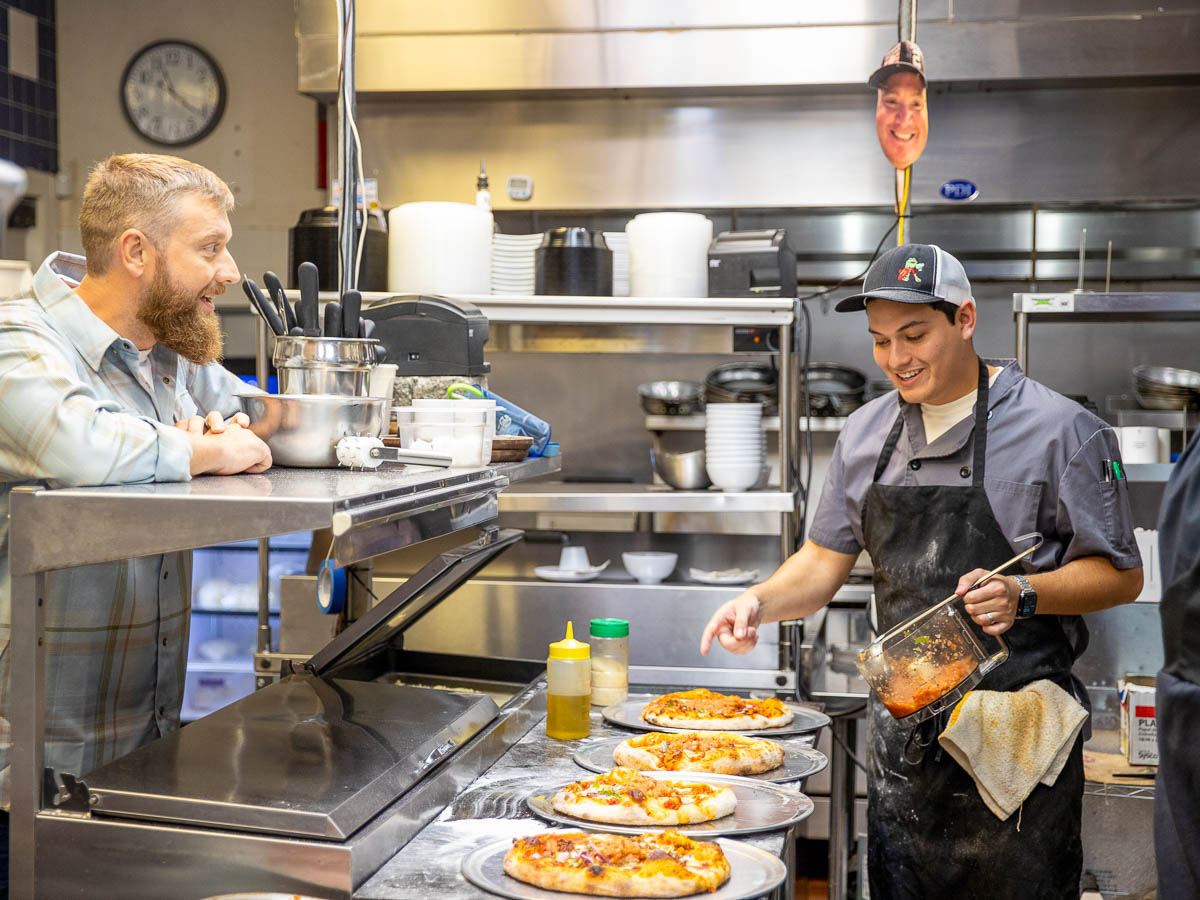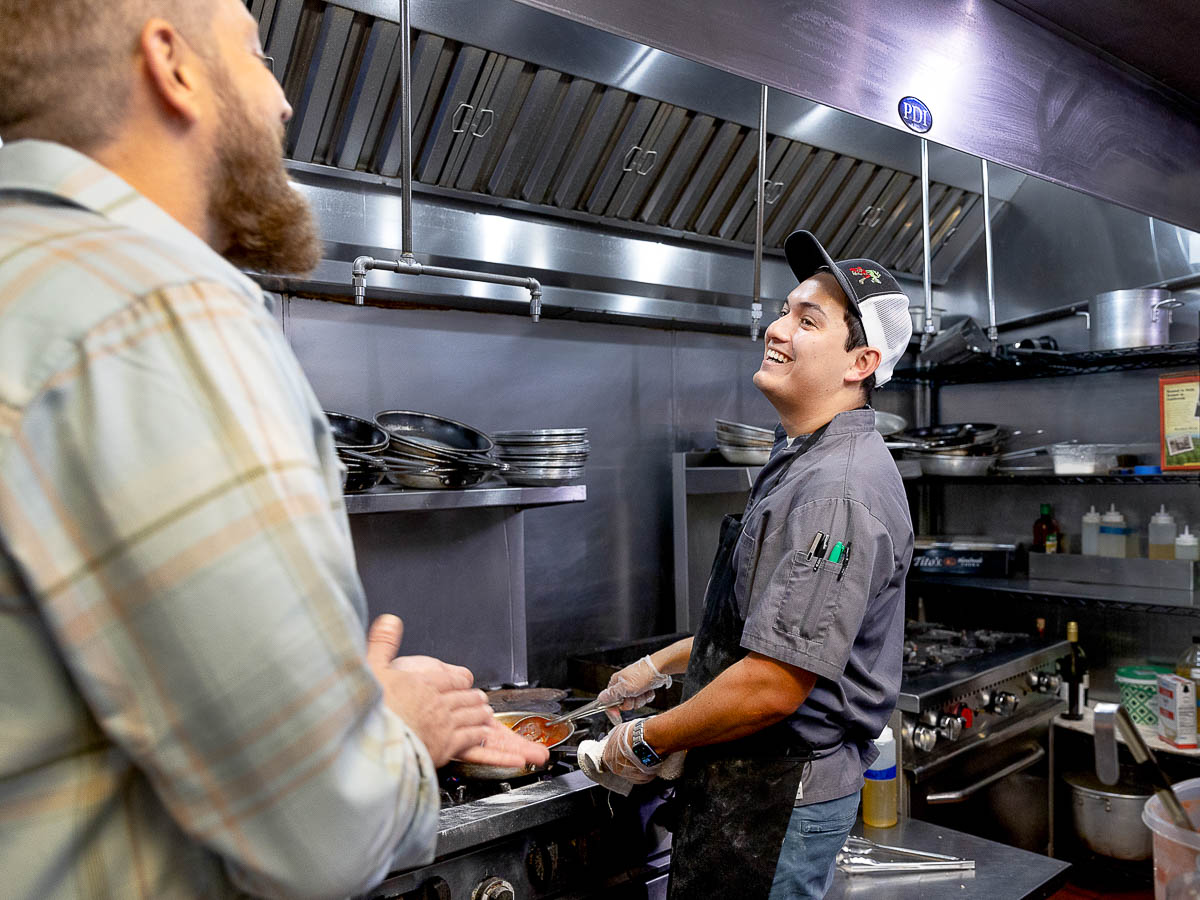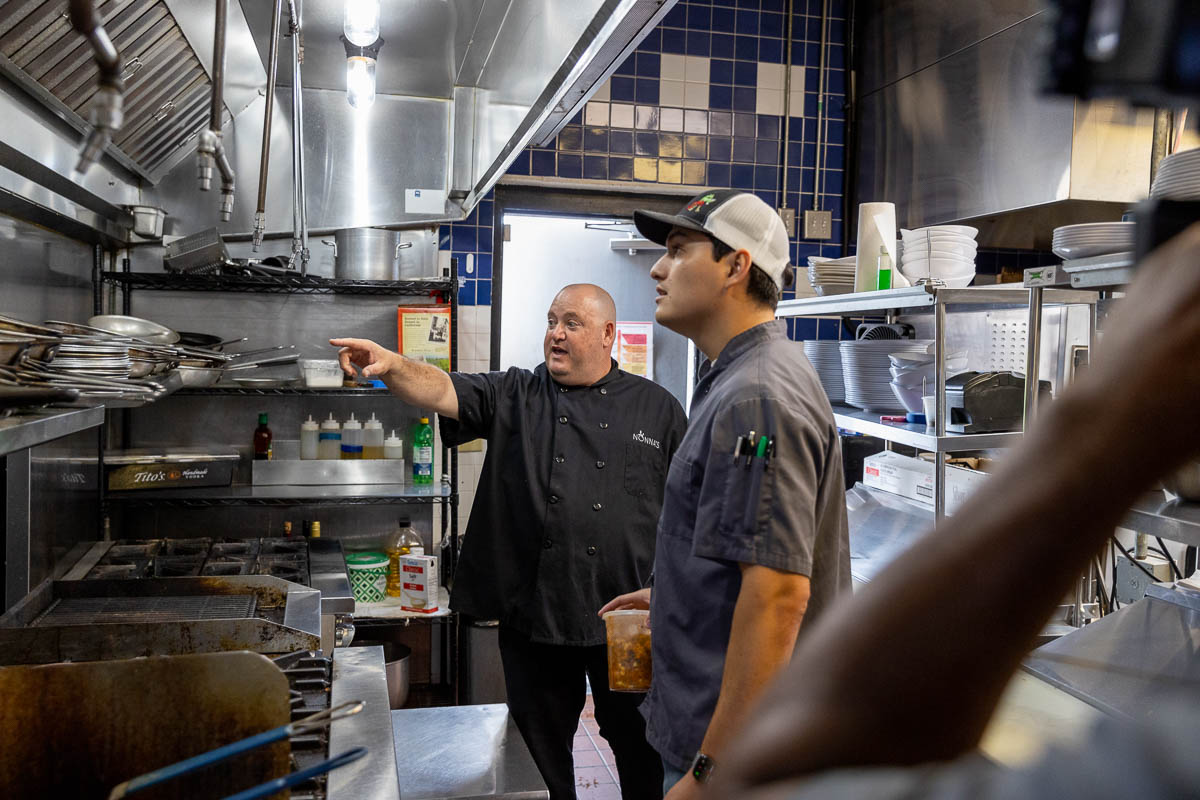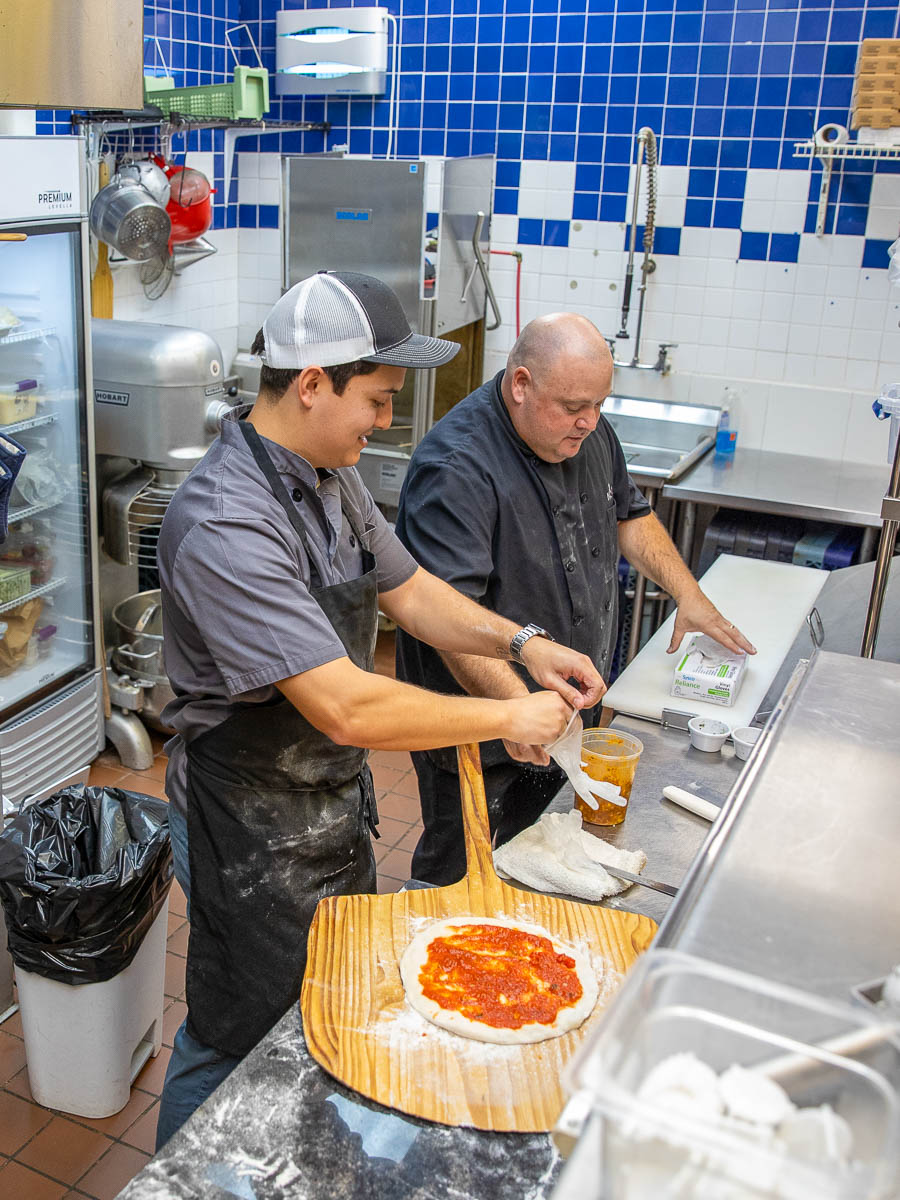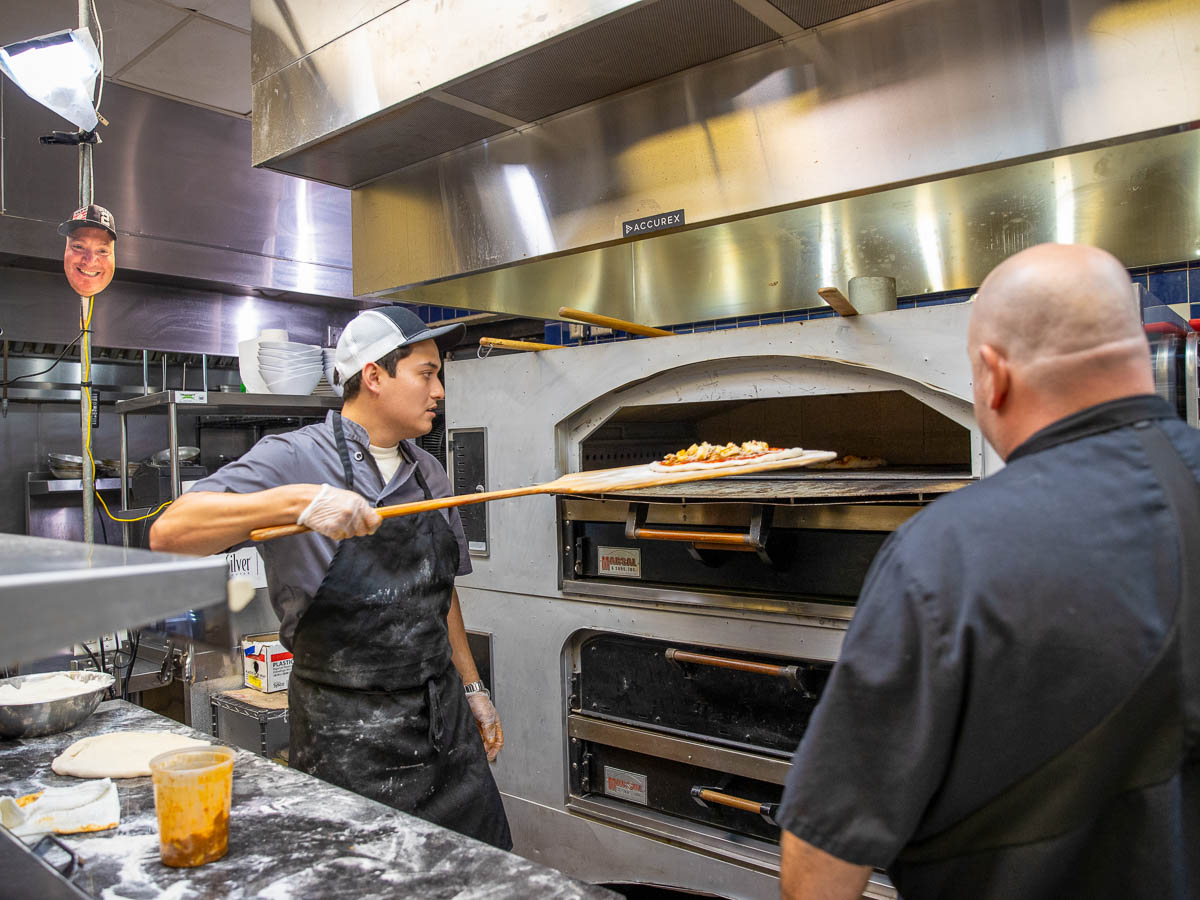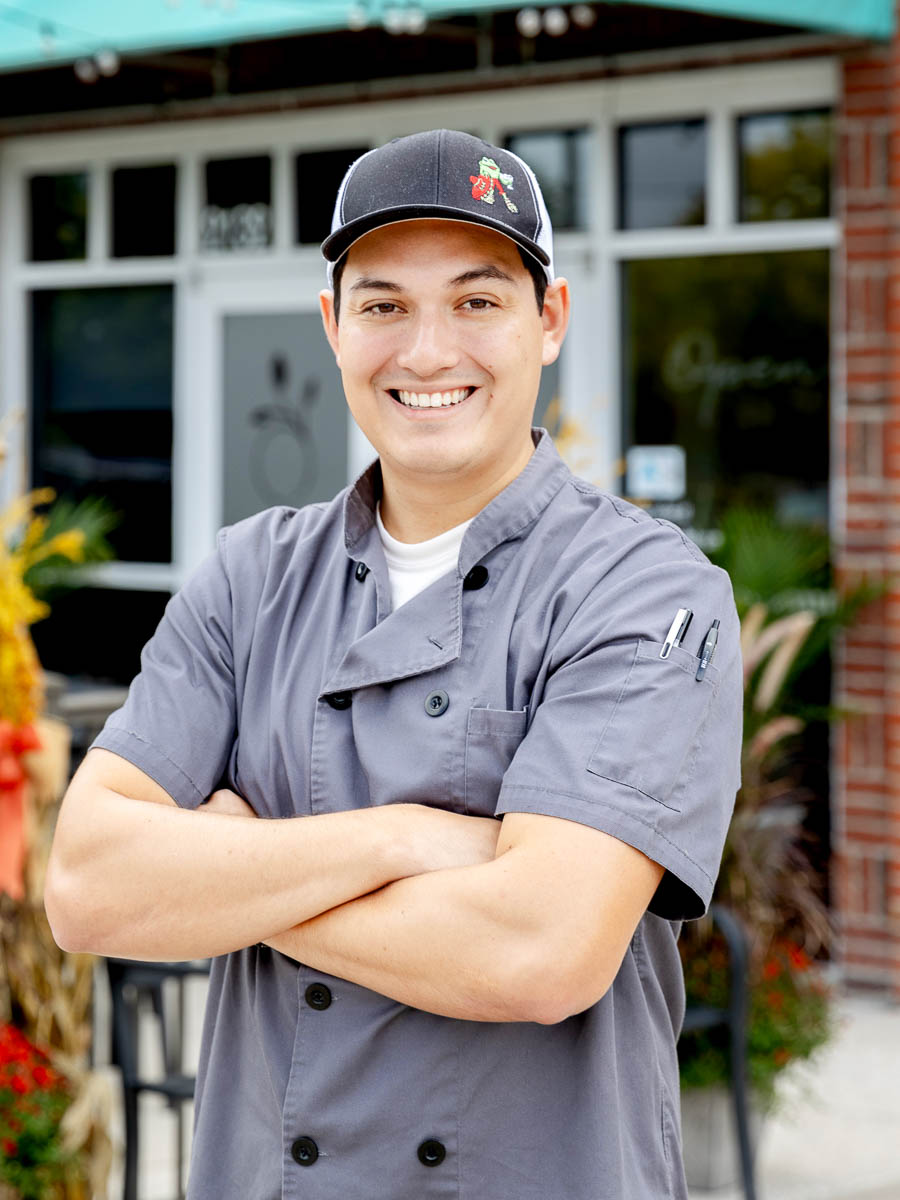
Gabriel Hernandez
Gabriel Hernandez grew up in a family of restauranteurs that had regular family gatherings, came from various ethnic backgrounds, and inspired him to be a lover of worldwide cuisines that he infuses into his cooking.
About Gabriel Hernandez
No authentic chef can refute that love makes food taste good.
When we see the fare, its appearance should appeal to our eyes. When smelled, our senses should heighten in expectation that the aromas we inhale are a prelude to the great flavors awaiting us. Finally, we take a bite. If the food has heaps of love, we will enjoy our meal.
Fiesta Mexicana, where Chef Gabriel Hernandez is the executive chef, is a place piled up with love. And the expectation should be no less for a restaurant owned and operated by him and his kin. His devout love for his family and craft makes Hernandez a chef who constructs unforgettable feasts built on a deep affection for heritage at home in his heart.
John Drope traveled nearly 1,000 miles to savor food fixed with that depth of love.
“I drove from Kingston, Ontario to come here,’’ Drope said with a toothy smile. “I was here a long time ago with my daughter. We came here and had a great meal.”
Leaving all his kids, grandkids, and great-grandkids at home, he decided to hop in his car and start driving – something he likes doing. Once he put his foot on the gas, memories of Fiesta Mexicana returned so he decided to head to 410 70th Ave. N. in Myrtle Beach.
“I’m not a regular, but I will be,’’ said Drope, after taking a sip of his beer. “The food was great. It was a lot for so little money. I got the quesadillas with refried beans and rice. It was the best I’ve ever had, and I will be back.”
And he is not alone.
Family Ties and Fare
Visit any day, and you will see Hernandez and his kin inside and outside the walls. Their good-looking faces greet you with smiles and cheery hellos before deciding whether you will dine in the patio area or take a spot in the interior with it’s vivid hues of blue, red, and yellow accent walls and windows. The bold colors mimic the vast menu selections offering the best-loved South American meals.
“My family has a long tradition of excellence in the food and service industry,’’ Hernandez said. “Most of my uncles, aunts, and grandparents have owned or currently own restaurants, taquerias, or other eateries throughout this hemisphere of the globe.”
The profound impact of his family manifests on who Hernandez is as a chef, husband, new dad, and in-law. Regardless of his role in someone’s life, it is apparent that he absorbed every ounce of wisdom his elders offered and displayed which made him the man he is now and the man he will become.
Much of that transformation began surrounded by food and family.
“Growing up, as busy as the restaurant schedule was, we always made time to eat together,’’ said Hernandez, who was 2 when his parents opened Fiesta Mexicana in 1999. “We would have at least one meal a day together.”
His dad, Gabriel, is Mexican, and his mom, Silvia, is Ecuadorian. Their marriage of cultures was the definitive melting pot that allowed him to brew into the chef he is today. His mother’s siblings live in Myrtle Beach, and they married spouses from sundry ethnicities.
Relatives native to Puerto Rico and Colombia are among the people who help bring a robust epicurean ocean that washes over the sands of Hernandez’s beach of bodacious interpretations of esteemed food enjoyed around the planet.
“Gabriel is creative,’’ said Samantha Hernandez, his wife, and mother to their infant son, Gabriel Alejandro. “He likes to mix different cuisines; he always integrates his ethnicity into his food. He will bring in something from Ecuador and something from Mexico. He loves experimenting.”
Since giving birth on Oct. 14th, she has happily enjoyed his unique takes on food – some denied during her pregnancy – as he spoiled her with anything she fancies.
"He makes the most delicious meals,'' she said. "It's amazing. I keep telling people, ‘Marry a chef.’’’
Among his homemade homages to her was a tuna poke bowl chock full of vegetables, lamb chops, and chicken pot pie, with the latter also enjoyed by her sister, Juliet Zamora.
"At first, I thought it looked questionable, and then I tried it,’’ Zamora said of her encounter with the chicken pot pie. “It was delicious. He has cooking skills, and he can do anything with whatever he has.”
Meet this chef, and you will discover he has eclectic and extensive knowledge about food and world cultures.
"I've been to 22 countries in four continents,'' he said. "So, when you can go out and try food in all these different places, you realize just how much we have in common as a species.”
He relishes incorporating global finds into his local sensations featured at the restaurant he owns with his family.
“A great example of this is carnitas,’’ Hernandez said. “Everyone is like ‘carnitas are super Mexican,’ but the idea of carnitas is an amalgamation of European cooking practices with native cooking practices from the region of Mexico. The Spanish brought over the pigs. The idea of cooking it in its grease, the confit, is a French technique. But then, the native Mexicans pair it with their tortillas.”
The Beauty of Blending
There is nothing one-dimensional about Hernandez. Like Shrek, he is an onion – without the smell and tears but with many layers.
His culinary wisdom and talents are from personal relationships and trips to Mexico, Japan, and other places.
When he was just 10, fresh from a Mexico trip, he came back and invented chorizo cheese fries that were placed on the menu and well-received.
Hernandez was also the one who started making fresh tableside guacamole at Fiesta Mexicana.
Potentially, it is hands-down the best guacamole people will ever taste. In addition to the traditional ingredients, it has a hearty dollop of a complimentary condiment made of artichoke hearts and roasted red peppers with parmesan as a garnish.
His epilogue goes back to his earliest memories of loving time spent in the kitchen with his parents, both exceptional cooks with whom to be reckoned.
Which parent is the better cook of the two? Whose kitchen artistry has been most impactful?
“Nobody has ever asked me that, and it is a hard thing to answer,’’ Hernandez said after fidgeting in his chair. “I have some recipes from my mom, and they are my favorite recipes in the world. Nothing beats my mom’s cooking, but my dad has a lot of professional skills in the kitchen because he grew up as a chef all of his life. I don’t know. I know my dad can cook better, but I have to say I like my mom’s food more – and I hope they don’t get mad at me for that answer.”
Enter the Coca-Cola wings. They are otherworldly. They are his favorite chicken wings in the world. His dad no longer makes them and as of this report, his dad has not shared his recipe with his only son.
“I don’t know how he did it, but they were sweet and savory, with a little bit of spice but nothing overbearing, and salty,’’ he said. “It’s like a perfect mix of all the flavors. He doesn’t do them anymore. I beg him, and he doesn’t. I don’t know why.”
Enter the orange chicken in the form of an Ecuadorian stew made by his mom. It includes orange juice, chicken quarters, chicken hearts, and chicken gizzards.
“It is so good,’’ Hernandez said while sitting in the outdoor patio area at Fiesta Mexicana on a chilly early evening. “I was never a picky eater growing up, and the chicken hearts were one of my favorite things, and still are one of my favorite proteins.’’
His devotion to absorbing, learning, and duplicating the tastes and methods of cooking found in numerous cultures differentiates him from other brilliant food preparers.
“If you know about the history of Ecuador, we are heavily influenced by our African roots as well,’’ Hernandez said. “There is a whole community called Rio Plata – it means ‘the river of silver,’ but that is a community founded by Africans who had escaped off of slave ships, made their way into Ecuador, and were living as free peoples.’’
Guests at the restaurant can hear Cumbia music playing. It contains contagious, staccato beats that patrons jingle their hips to while dining.
“The rhythm they get from Cumbia – and Cumbia can be found in Mexico and all the way far south as Colombia – it comes through the African slave trade,’’ said Hernandez, who is also a solid singer and has entertained guests at Fiesta Mexicana. “It was a way for them to communicate and the beat they had was initially made by the slaves shuffling with their chains. They took something so horrible, so dark, and they found lightness and a way to come together and bring celebration.”
Time spent with Hernandez allows folks to witness Fiesta Mexicana as a family legacy and a community conduit of alliance.
One of the best parts of the business for him is making deeper connections to people he knows and people he meets for the first time.
“The beautiful thing about cooking – the beautiful thing about all cuisines – is that if you have a good meal it brings people together,’’ he said. “You might not even speak the same language, but if the food is good, people will come together, get together, live together, and make memories.”
Story by Johanna Wilson Jones
